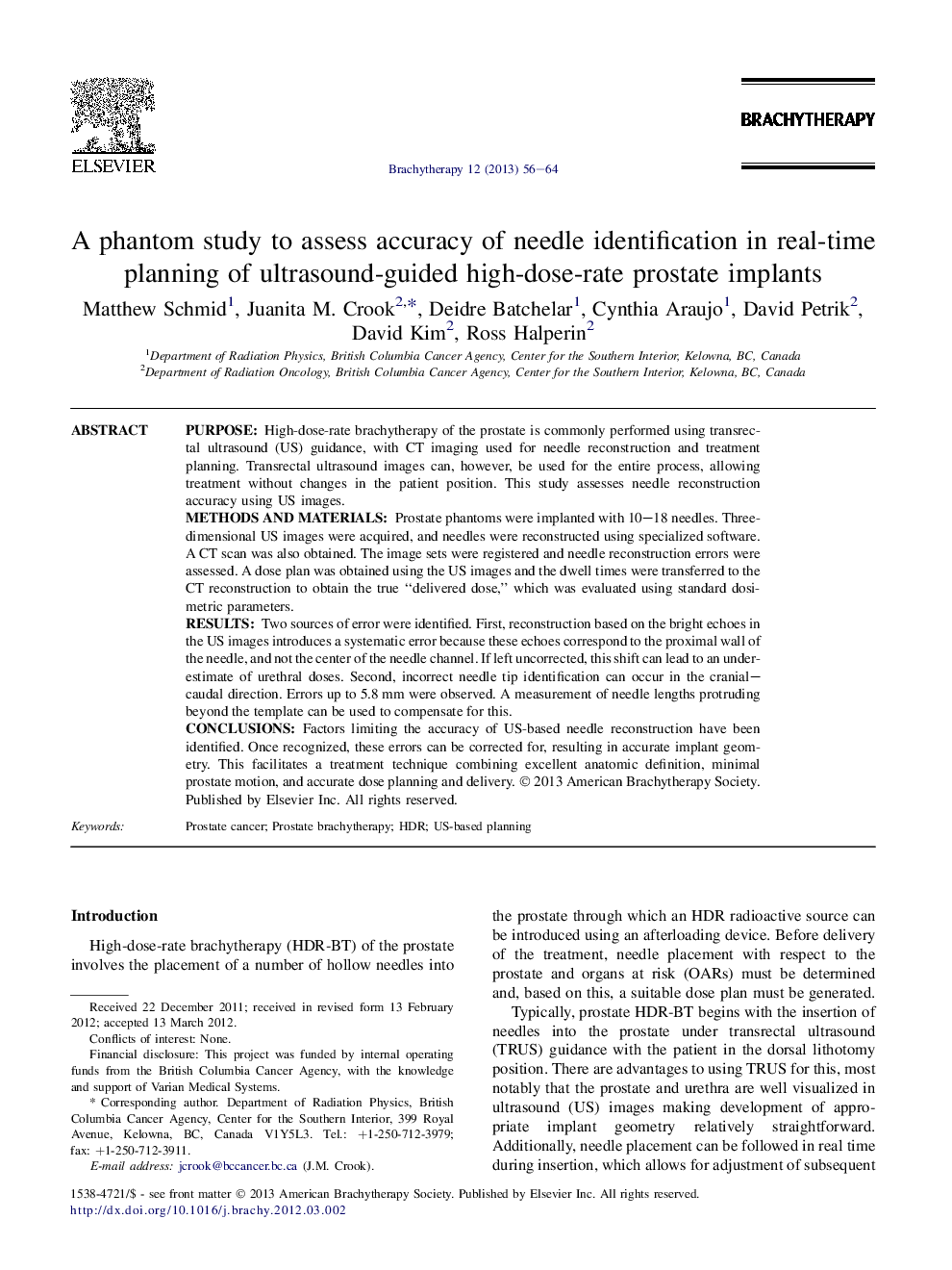| Article ID | Journal | Published Year | Pages | File Type |
|---|---|---|---|---|
| 6189847 | Brachytherapy | 2013 | 9 Pages |
PurposeHigh-dose-rate brachytherapy of the prostate is commonly performed using transrectal ultrasound (US) guidance, with CT imaging used for needle reconstruction and treatment planning. Transrectal ultrasound images can, however, be used for the entire process, allowing treatment without changes in the patient position. This study assesses needle reconstruction accuracy using US images.Methods and MaterialsProstate phantoms were implanted with 10-18 needles. Three-dimensional US images were acquired, and needles were reconstructed using specialized software. A CT scan was also obtained. The image sets were registered and needle reconstruction errors were assessed. A dose plan was obtained using the US images and the dwell times were transferred to the CT reconstruction to obtain the true “delivered dose,” which was evaluated using standard dosimetric parameters.ResultsTwo sources of error were identified. First, reconstruction based on the bright echoes in the US images introduces a systematic error because these echoes correspond to the proximal wall of the needle, and not the center of the needle channel. If left uncorrected, this shift can lead to an underestimate of urethral doses. Second, incorrect needle tip identification can occur in the cranial-caudal direction. Errors up to 5.8Â mm were observed. A measurement of needle lengths protruding beyond the template can be used to compensate for this.ConclusionsFactors limiting the accuracy of US-based needle reconstruction have been identified. Once recognized, these errors can be corrected for, resulting in accurate implant geometry. This facilitates a treatment technique combining excellent anatomic definition, minimal prostate motion, and accurate dose planning and delivery.
